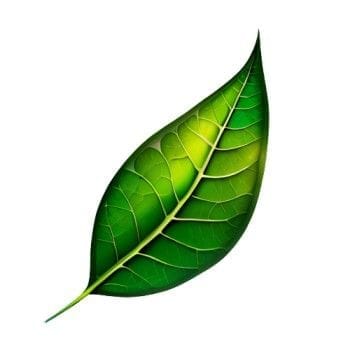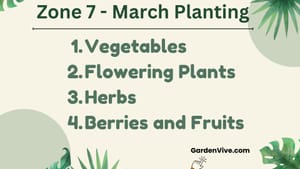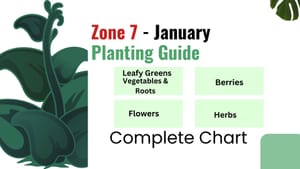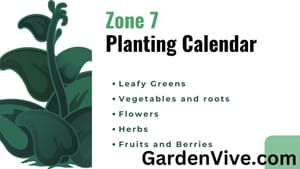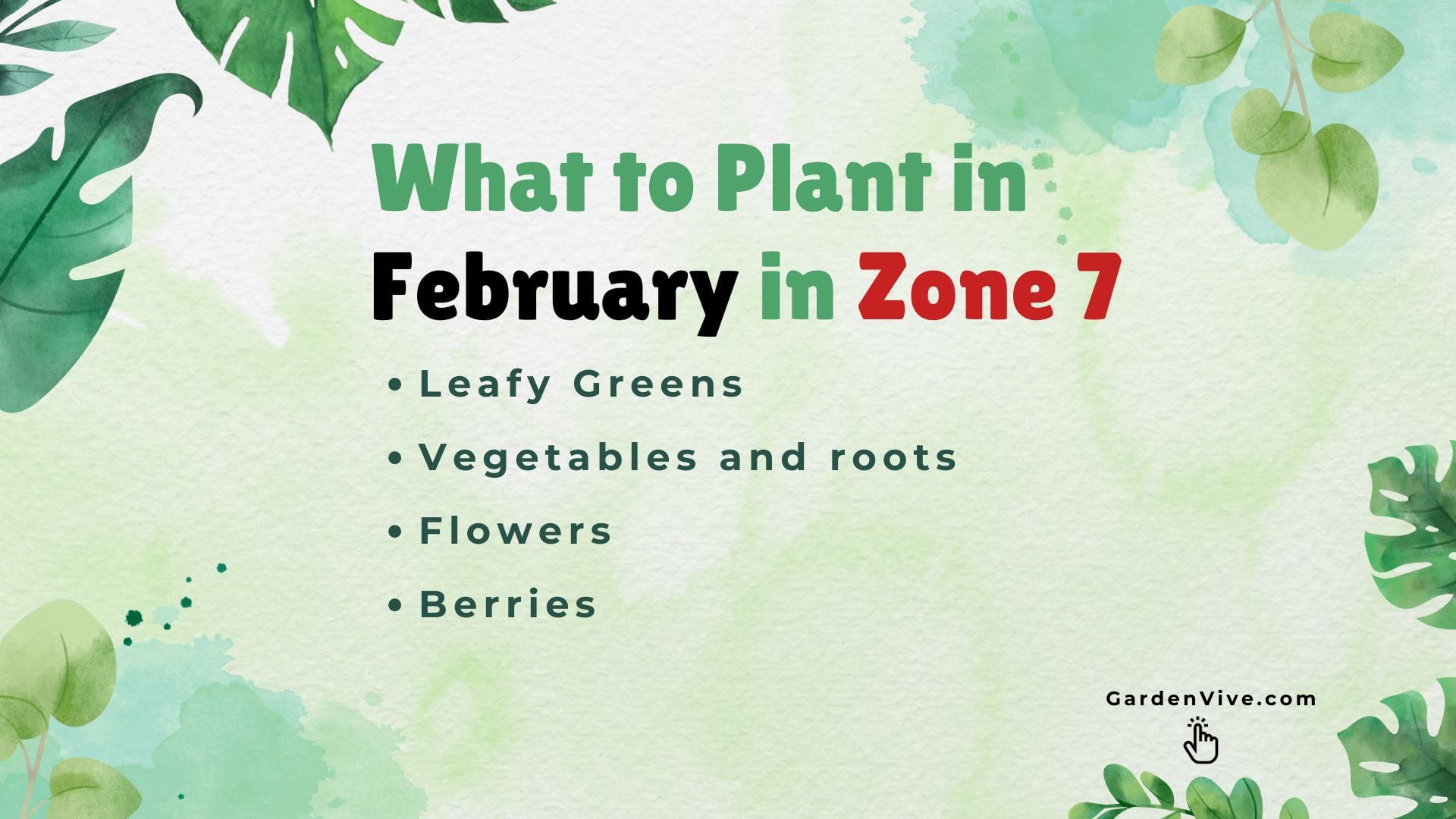
In February, Zone 7 is suitable for planting the cold hardy plants outdoors and spring season plants indoors. The end of February indicates winter's fading and spring's early emergence. In this article, you will find charts of February planting for Zone 7.
Note: Many of the gardeners keep complaining about the charts they find online. They say we should not grow this or that in this particular month. I want to make it clear.
You should understand the difference between a monthly planting chart and a yearly planting chart. A yearly planting chart for Zone 7 will show you the best planting time for the specific plants that grow well in this Zone.
On the other hand, monthly planting charts will show you what plants can be planted in the corresponding month you are looking for. (The plants will grow fine but it might not be the best planting time)
For example: You can consider March as the best planting time for onions but it does not mean it will not grow if planted in April.
I am dividing these charts into two major categories:
- What seeds to start indoors
- What to start outdoors
Let's start with indoors.
What seeds to start indoors in February in Zone 7
As I said, we can start the seeds of spring crops in controlled temp. (using grow lights). Besides these, we can start some cold-weather seeds that have a shorter lifespan.
Vegetables
| Plant Name | Germination Time | Transplanting Time (Date Range) | Optimal Germination Temp | Variety Recommendations |
|---|---|---|---|---|
| Broccoli | 5–10 days | Mid to Late March | 65–75°F | Green Magic, Waltham 29 |
| Cauliflower | 7–12 days | Mid to Late March | 65–70°F | Snowball, Amazing |
| Spinach | 6–10 days | Early to Mid March | 50–75°F | Bloomsdale, Space |
| Kale | 5–8 days | Early to Mid March | 55–75°F | Lacinato, Red Russian |
| Onions | 7–12 days | Mid to Late March | 65–75°F | Yellow Sweet Spanish, Red Candy Apple |
| Lettuce | 7–10 days | Early March | 60–75°F | Buttercrunch, Romaine |
| Peas | 7–14 days | Direct Sow Early February | 50–70°F | Little Marvel, Sugar Snap |
| Eggplant | 7–14 days | Mid to Late April | 75–85°F | Black Beauty, Fairy Tale |
| Tomatoes | 5–10 days | Mid to Late April | 70–80°F | Roma, Brandywine |
| Bell Peppers | 7–14 days | Late April to Early May | 70–85°F | California Wonder, Big Red |
| Celery | 10–21 days | Mid to Late April | 70–75°F | Tall Utah, Golden Pascal |
Note: If you'd like to start eggplant, celery, and bell pepper seeds indoors in February, you'll need to wait until April to transplant them. It will be a better option if you start these in the next month.
Flowering seeds to start in February
| Plant Name | Germination Time | Transplanting Time (Date Range) | Optimal Germination Temp | Perennial or Annual |
|---|---|---|---|---|
| Marigold | 5–10 days | Late April to Early May | 70–75°F | Annual |
| Snapdragon | 10–21 days | Mid to Late March | 60–70°F | Perennial |
| Cosmos | 7–10 days | Late April | 70–75°F | Annual |
| Black-Eyed Susan | 7–30 days | Mid to Late April | 70–80°F | Perennial |
| Zinnia | 5–10 days | Late April to Early May | 70–80°F | Annual |
| Delphinium | 14–21 days | Mid to Late April | 55–65°F | Perennial |
| Pansy | 7–14 days | Late March to Early April | 65–75°F | Annual |
| Shasta Daisy | 10–20 days | Late April | 65–70°F | Perennial |
| Hollyhock | 10–14 days | Mid to Late April | 70–75°F | Perennial |
| Petunia | 7–14 days | Late April to Early May | 70–75°F | Annual |
Petunia comes in various colors and I love this one the most.
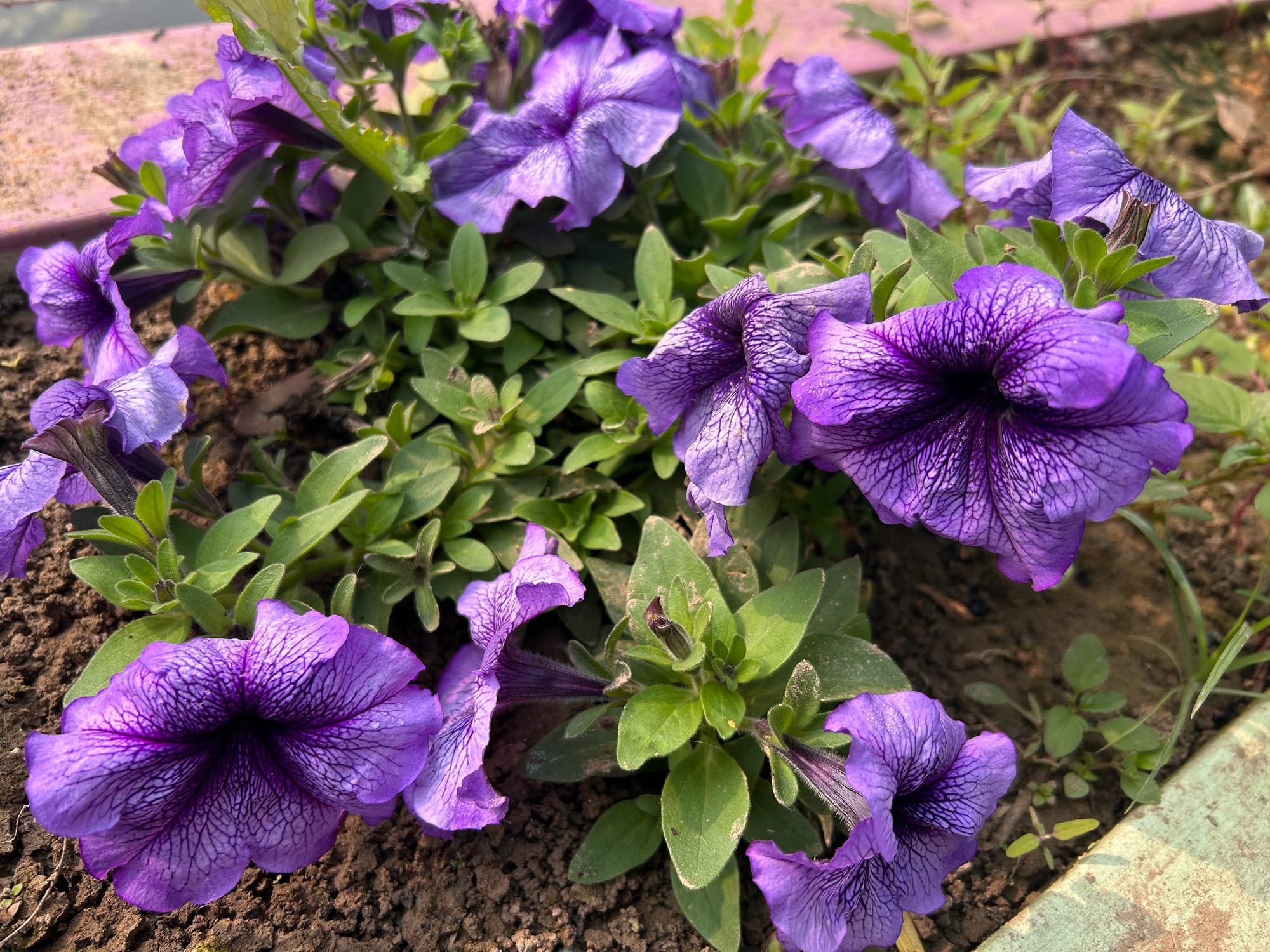
What to plant outdoors in February in Zone 7
Planting outdoors in early February in Zone 7 can be a bit difficult. But if the soil is not frozen you can go for it.
It's better to check the weather forecast before start planting outdoors.
Here I am giving you a few cold hardy plants that can tolerate chilly weather.
As there are not many suitable options to plant, I am merging all the plant types in a single chart.
| Plant Name | Cold-Hardy Variety Recommendations |
|---|---|
| Spinach | Bloomsdale Long Standing, Giant Winter |
| Peas | Alaska, Wando |
| Radishes | French Breakfast, Cherry Belle |
| Onion Sets | Yellow Granex, White Sweet Spanish |
| Garlic | German Extra Hardy, Music |
| Beets | Detroit Dark Red, Early Wonder |
| Carrots | Danvers Half Long, Scarlet Nantes |
| Pansies | Delta Premium, Cool Wave |
| Larkspur | Imperial Giant, Sublime Mix |
| Sweet Peas | Old Spice, Mammoth Mix |
| Calendula | Pacific Beauty, Resina |
| Kale | Red Russian, Winterbor |
| Lettuce | Buttercrunch, Winter Density |
Love berries? This is for you:
| Plant Name | Planting Method | Transplanting Time | Variety Recommendations |
|---|---|---|---|
| Strawberries | Plant bare-root crowns in well-drained soil. | February to March (as soon as the ground is workable). | Seascape, Chandler |
| Raspberries | Plant bare-root canes or dormant plants in raised beds. | Late February to early March. | Heritage, Caroline |
| Blueberries | Plant container-grown bushes in acidic, well-drained soil. | Late February to mid-March. | Patriot, Bluecrop |
| Blackberries | Plant bare-root canes in rows or hedges. | Late February to mid-March. | Navajo, Triple Crown |
| Cranberries | Plant container-grown vines in acidic soil with good drainage. | Late February (in frost-free areas). | Stevens, Pilgrim |
| Gooseberries | Plant dormant bare-root or potted bushes. | Late February to early March. | Invicta, Hinnonmaki Red |
| Currants | Plant bare-root or container-grown bushes in full sun. | Late February to mid-March. | Red Lake, Consort |
Subscribe to this site (It's free), I will be back with next Month's planting guide soon.
